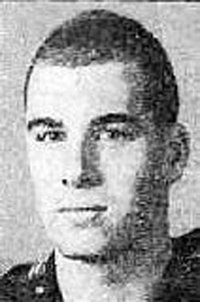
I realized that I hadn't seen many good examples of Tibetan iconography before I went to India a few months ago, and since I haven't scanned my photos from my vacation to Daofu there's a good chance that many of you also aren't familiar with their artistic style. I was unable to find an example of thanka painted in light colors on a black background, which makes for a nice reverse chromatography excellent for depicting fiery skulls and blazing Dharma Protectors with bulging eyes and enormous teeth.
I think this image is related to the Hindu Mahakali (Great Black Goddess), and similar or the same as the Tibetan Vajrayogini. Michael would be able to correct me on all of this. Things to note about this image are her headdress of skulls, and the tiny man she holds in her right hand. She tramples a man under her left foot, and she wears a necklace of red and blue severed heads (that has a nice ring to it). I'm uncertain of what holds in her right hand.
She is a Dharma Protector. She ferociously guards the Three Jewels of Buddha, Dharma, and Sangha. Other fiery deities are appealed to in order to purify bad karma or powerfully overcome obscuration. I'm embellishing a bit, and Michael would have more authority to explain this symbolism. She is a powerful Tantric deity, clearly superior to her male counterparts; some Dakinis are even depicted as coupling with one or a number of shriveled male consorts.
Pretty damn sweet if you ask me.


1 comment:
awesome selection of images. she is the most wrathful manifestation of vajrayogini. the black demoness plays a crucial role in the cutting practice (chod), where the meditator imagines him/herself being beheaded and having their own body boiled in a cauldron of their own skull as an offering to her and any other assembled demons or evil spirits.
she holds a gyaling (a trumpet made out of a human thighbone) in her hand. the small man represents the severed ego, of course. i've seen a lot of these femur trumpets, lama wangdu is a master of this practice.
Post a Comment